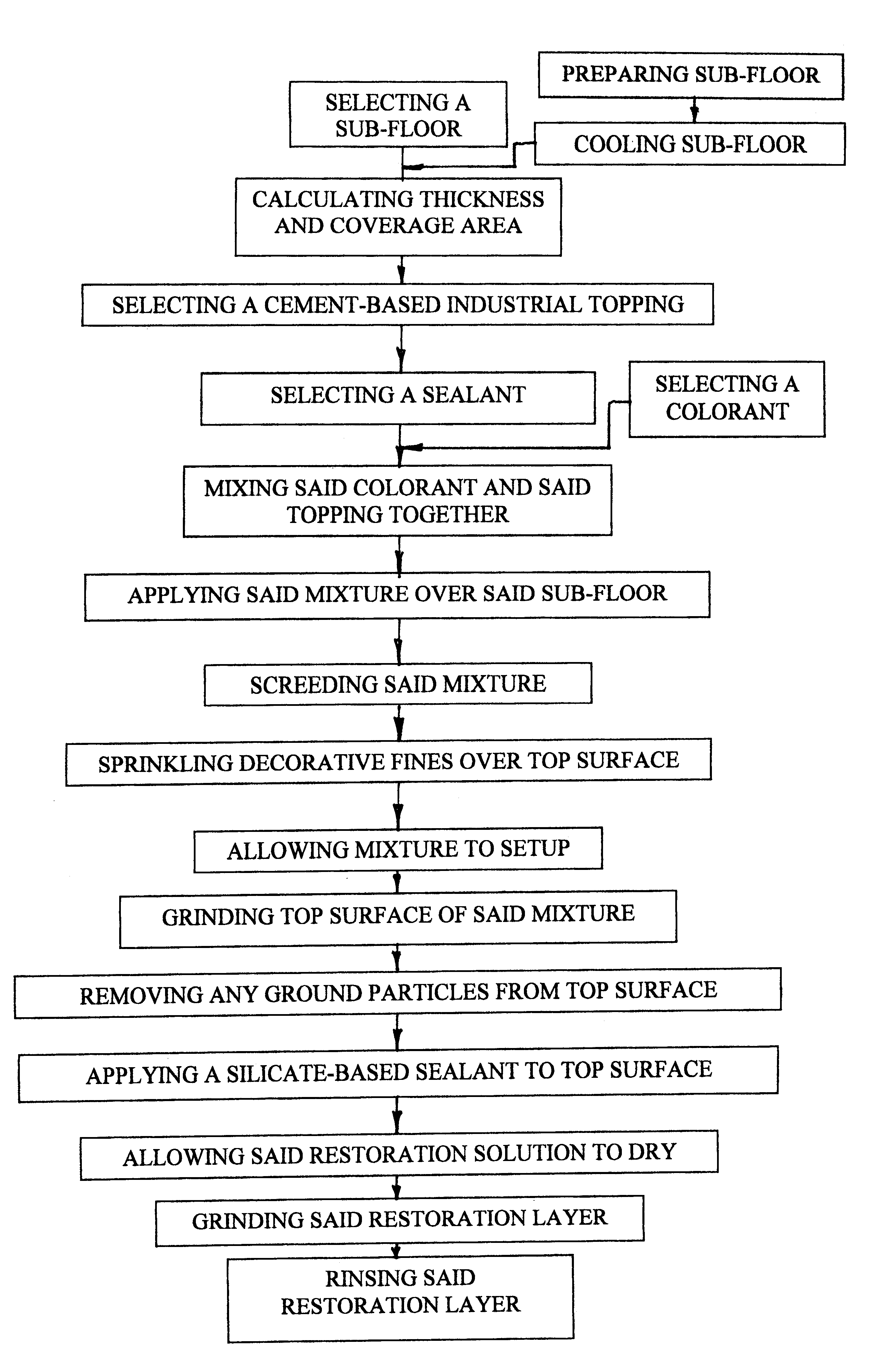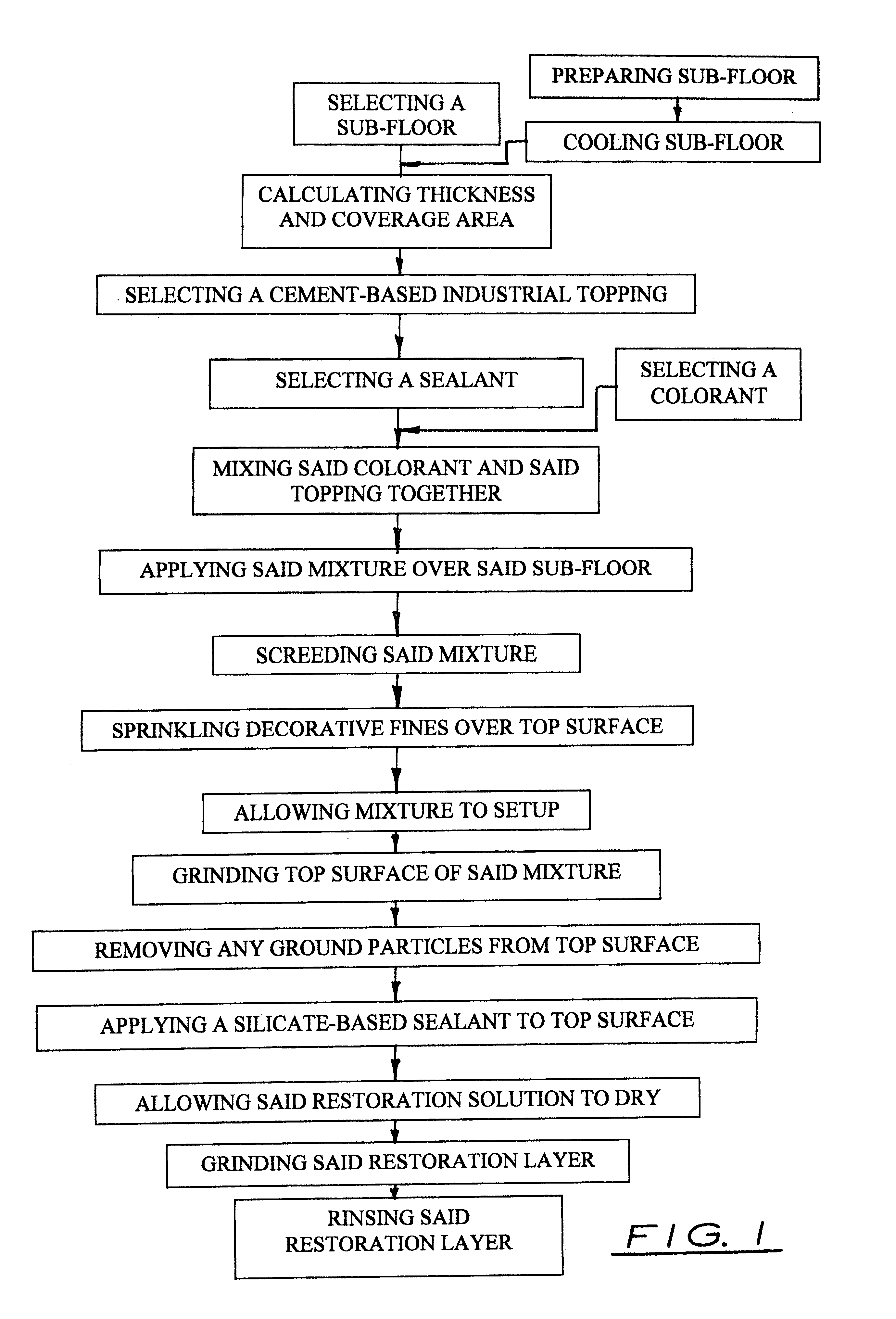Method of manufacturing decorative cementuous floor surface
a cementuous floor and decorative technology, applied in flooring, building repairs, building material handling, etc., can solve the problems of mold contamination, the most costly moisture, and the failure of concrete floor systems
- Summary
- Abstract
- Description
- Claims
- Application Information
AI Technical Summary
Benefits of technology
Problems solved by technology
Method used
Image
Examples
Embodiment Construction
)
Referring to the accompanying FIG 1, there is described a method of manufacturing a decorative floor surface with improved overlayment holding properties. The decorative floor surface can be constructed over "old" concrete surfaces or over "new" concrete surfaces. In both types of application, a smooth, flat, decorative finish floor is create with improved moisture and alkalinity control.
When constructing the decorative floor over an "old" concrete sub-floor, the old concrete floor is first scrubbed and cleaned. Next, a cementuous, self-leveling topping is selected and mixed with a silicate-based sealant. In the preferred embodiment, the topping is a poly-modified cement-based product that is mixed with an appropriate amount of water to produce a dry self-leveling consistency. The topping and water are both kept at a temperature range between 55 degrees to 75 degrees F.
After preparing the topping, a silicant-base sealant is added to the topping to create a topping-sealant mixture. ...
PUM
| Property | Measurement | Unit |
|---|---|---|
| durable | aaaaa | aaaaa |
| thickness | aaaaa | aaaaa |
| temperature | aaaaa | aaaaa |
Abstract
Description
Claims
Application Information
 Login to View More
Login to View More - R&D
- Intellectual Property
- Life Sciences
- Materials
- Tech Scout
- Unparalleled Data Quality
- Higher Quality Content
- 60% Fewer Hallucinations
Browse by: Latest US Patents, China's latest patents, Technical Efficacy Thesaurus, Application Domain, Technology Topic, Popular Technical Reports.
© 2025 PatSnap. All rights reserved.Legal|Privacy policy|Modern Slavery Act Transparency Statement|Sitemap|About US| Contact US: help@patsnap.com



